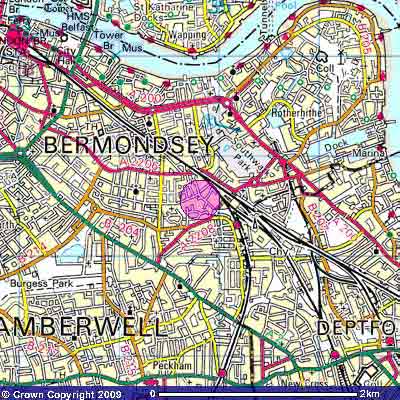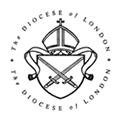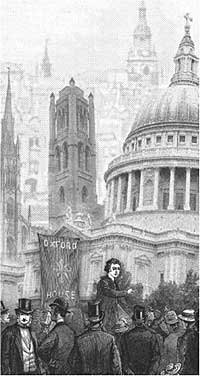What can I find in the Church of England Record Centre?
i. Overview
The Church of England Record Centre (CERC) came into operation in 1989, and consists of the former archives of the Church Commissioners, the General Synod and its predecessors, the National Society for Promoting Religious Education, and a few smaller collections relating to the administration of the Church of England. Its main function is to support the central administration of the Church of England by providing a records management and deeds registry service to the National Church Institutions, including the Archbishops' Council, the Church Commissioners, the General Synod and the National Society. An additional purpose of this service is to provide public access to these segments of the Church’s history, to act as an advisory point for general enquires and to assist with church history. However, the collections available are not exhaustive and should be studied in conjunction with the collections held by Lambeth Palace Library, London Metropolitan Archives and other local archives.
ii. Contact Details
Address
15 Galleywall Road
Bermondsey
London
SE16 3PB
Telephone: (020) 78981030
Fax: (020) 7394 7014
Email: archivist@c-of-e.org.uk
Website: www.cofe.anglican.org
Open: CERC is not open to the general public. You will need to order material in advance to be sent to Lambeth Palace Library (see ‘Access’ for more details).

Map from http://getamap.ordancesurvey.co.uk
iii. Access
Access to collections is usually through the Reading Room at Lambeth Palace Library. The records, including files and deeds, can be made available for public viewing at Lambeth Palace Library between 10am and 5pm, Monday to Friday. Anyone wishing to consult the records will be required to give 5 days notice of their visit to the Library. The records will be delivered to the Library and will be retained there for 20 working days. No appointment will be needed once the documents have been requested from CERC. You will need to obtain a readers' ticket and abide by Library rules. Only rarely will you be asked to visit CERC and this will be arranged at the discretion of the archivist. (For details see ‘Archives in London: Lambeth Palace Library’).
You should be aware that you will not be able to consult all of CERC’s material. Only material over thirty years is open to public access, consequently current files cannot be sent to Lambeth Palace. All published materials can be viewed without restriction. Access of the archives of ecumenical bodies such as Churches Together in Britain and Ireland is at the discretion of the organisation concerned. You might need written permission from the ecumenical body concerned to view some of their items.
iv. Catalogue
CERC has catalogued a large proportion of their material on Lambeth Palace Library website: www.lambethpalacelibrary.org/content/searchcollections. From here, click on ‘online catalogue of archives and manuscripts’. This will open a new window and allow you to search the CERC’s archival material by scrolling down to the ‘Church of England Centre’ in the ‘Repository’ box. New material is regularly added to this catalogue.
However, the majority of CERC’s holdings remain uncatalogued. The only finding aids remain a series of manual card indexes for Queen Anne’s Bounty and the Ecclesiastical Commissioners. The card indexes can only be accessed at CERC’s Bermondsey office. These are usually arranged by the name of the current benefice, preferment estate and parish. This is further complemented by an internal records database of the Church Commissioner deeds and various church bodies who have despotised material at CERC through the records management system since 1999. You should email the archivist archivist@c-of-e.org.uk for further information.
v. Further Information on Collections
a) Church Commissioners Archive
The Church Commissioners were formed in 1948, through the merger of two earlier bodies, the Queen Anne Bounty (founded in 1700) and the Ecclesiastical Commissioners (founded 1838), which absorbed the Church Building Commissioners (1818-1857) in 1857. All three bodies’ archives are held by CERC. Today, the Church Commissioners are responsible for managing their corporate investments, pastoral reorganisation, the closure of consecrated church buildings and establishing or dissolving group ministries, benefices and parishes.
Much of the material held by CERC relates to ‘benefice’ property. Where the Commissioner, or their predecessors, were involved with the administration of the finance of parish property, a file of correspondence will exist. These will consist of correspondence, application forms, details of expenditure and income notably the parish returns received by the Ecclesiastical Revenues Commission in 1832, title documentation including deeds relating to the purchase and sale of land. In a few cases, these files can outline the personal circumstance of individual clergyman and the parish. It is rare to find anything in this collection regarding the design or architecture of church building, as the Church Commissioners were infrequently consulted on these matters. However where the Commissioners’ acquired a chancel repair liability from a former bishopric of cathedral chapter estate there may be plans of proposed chancel repairs. This material can also be used in conjunction with a series of Acts of Parliament, especially those concerned with improvement.
The Church Commissioners also owned a number of commercial (or ‘corporate’) properties in London acquired from the Dean and Chapter of St. Paul’s Cathedral the Bishop of London, Westminster Abbey and other preferment estates situated in London. These estates have produced a range of material including correspondence, deeds newspaper cuttings and plans, however as the estates were managed through local agents they contain very limited information about their tenants. These are primarily from the 1920s and 1930s a number of Ecclesiastical Commissioners’ Secretariat files reflecting their growing concern with replacing slum housing with modern social housing. Official material has also been deposited in CERC.
b) General Synod
The General Synod is a national assembly of the Church of England. It had the power to draft and debate church legislation. It was established in 1970 and replaced an earlier body known as the Church Assembly (1920-1970), previously known as the National Assembly until 1924, and the Representative Church Council (1909-1919).
A large part of this collection consists of documents relating to legislative matters, annual reports and other reports circulated before the meeting of the Church Assembly and the General Synod. The collection contains published and transcript proceedings of these meetings. Where possible, you should consult both documents as the published versions were summarised and tidied up, whilst the transcripts are similar to Hansard and are more conversational. There is also an extensive holding of publications concerning a wide range of social issues published by the Church of England.
These minutes show that the Synod’s interests extended into the areas of Ministry, Social Responsibility, Mission, Education, Care of the Church Buildings and Cathedrals. It was, and still is, advised by Boards and Councils based at Church House Westminster. The Record Centre holds the minutes and files for these organisations. This includes:
Education: Provincial Councils for Religious Education (from 1911), Board of Supervision and the Church of England Youth Council (from 1935).
Social mission: The Church of England Purity Society and the White Cross League (from 1895), Church of England Council of Empire Settlement (from 1925), Church of England Moral Welfare Council and Social and Industrial Council.
c) National Society for Promoting Religious Education
CERC holds the rich archival collection of the National Society for Promoting Religious Education. Founded in 1811, the society was one of the earliest bodies to promote the provision of education in England and Wales.
The archive contains over 15,000 files of correspondence concerning National Schools, whether they are still open or closed (Series Ref. NS/7/1). These files are mostly concerned with financial assistance given towards the building or improving school premises. A large proportion of these files will contain correspondence and papers regarding applications for grants. It will often also provide information on the school’s Trust Deed and Foundation. Supporting papers for these applications (school annual reports, plans, illustrated letterheads showing the school buildings, and information on the foundation of the school) might be of great interest. However, researchers should be aware that contents can vary between schools. You may find that a file contains only a single cutting or, conversely, much of the history of the school from foundation to the present.
The Record Centre holds an extensive collection of the Society's books and publications, fully indexed. This includes the Society’s published Annual Report (from 1811), Monthly Paper (1847-1874), School Guardian (1875-1920s) and Reports from Diocesan Boards of Education (1812-1856; 1876-1920s). Also available are the Society survey of schools (1847), two Government surveys of 1818 and 1833, and the Board of Education’s Tenure and Trusts enquiry of 1907. CERC also holds organisational papers, which include minute and registers of teachers trained by the Society, 1812-1850.
In addition to the Society's own papers, the archive also includes the records of the Church of England Sunday School Institute (which amalgamated with the Society in the 1930s) and the St Katherine Cree Sunday School Library. More information regarding the Society, its history and archival deposits can be found at their website www.natsoc.org.uk. For more information on how to research you local school see ‘FAQs’.






